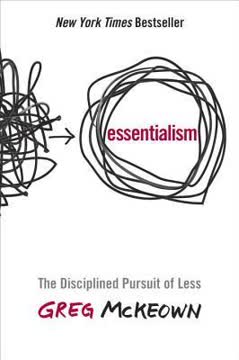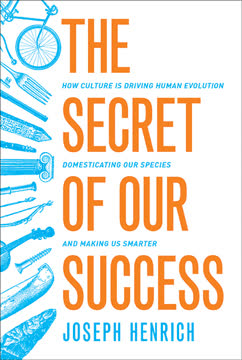Key Takeaways
1. Evolutionary psychology explains human behavior through natural selection
"Organisms – from worms to groundhogs to humans – are gene machines: biomachines designed to propagate their hereditary material."
Evolutionary foundation. Evolutionary psychology applies Darwin's theory of natural selection to the human mind and behavior. It posits that our psychological traits, like physical ones, evolved to enhance our ancestors' survival and reproduction. This approach views humans as "gene machines" designed to pass on their genetic material.
Adaptive explanations. Through this lens, seemingly irrational behaviors often have hidden evolutionary logic. For example:
- Fear of snakes: An adaptive response to ancestral threats
- Male aggression: A strategy for competing for mates and resources
- Food cravings: Preferences for high-calorie foods that were scarce in our past
Evolutionary psychology doesn't claim all behaviors are adaptive, but it provides a framework for understanding why certain tendencies are widespread in humans across cultures.
2. Sex differences in mate preferences stem from reproductive strategies
"Men see women as sex objects, whereas women see men as success objects."
Parental investment theory. Evolutionary psychologists argue that sex differences in mating preferences arise from asymmetries in potential reproductive output. Because women invest more in offspring (pregnancy, nursing), they tend to be choosier about mates and value resources and status. Men, able to produce many offspring, often prioritize youth and physical attractiveness as fertility cues.
Key sex differences in mate preferences:
- Men: Greater emphasis on physical attractiveness, youth
- Women: Greater emphasis on resources, status
- Both sexes: Value kindness, intelligence in long-term mates
These preferences aren't absolute rules but statistical trends shaped by evolutionary pressures. Cultural factors interact with these evolved tendencies, producing variation across societies and individuals.
3. Human mating systems blend monogamy, polygyny, and promiscuity
"Pair-bonding is our primary mating system, at least in as much as that it's the most common. But polygyny and casual mating are not aberrations; they're central elements of the human reproductive repertoire."
Flexible strategies. Unlike many species with fixed mating systems, humans exhibit a mix of mating behaviors. This flexibility likely evolved to allow individuals to adapt to varying environmental and social conditions.
Human mating patterns include:
- Pair-bonding: Long-term, mostly monogamous relationships
- Polygyny: Some men having multiple female partners
- Casual mating: Short-term sexual relationships
Each strategy can be adaptive in different circumstances. Pair-bonding facilitates biparental care, polygyny allows successful men to have more offspring, and casual mating can provide genetic diversity or quick reproductive opportunities. The prevalence of each strategy varies across cultures and individuals, influenced by both evolved predispositions and social norms.
4. Parental investment shapes child-rearing patterns and family dynamics
"Human offspring are utterly helpless at birth, and take a lot longer to grow up than the young of any other species."
High-investment offspring. Humans have an exceptionally long period of childhood dependency. This extended vulnerability necessitates significant parental investment, shaping family dynamics and social structures.
Key aspects of human parenting:
- Biparental care: Both mothers and fathers often invest in offspring
- Alloparental care: Extended family and community members assist in child-rearing
- Paternity uncertainty: Influences male parental investment strategies
The need for extensive childcare has likely contributed to the evolution of pair-bonding, as well as extended family networks and cooperative breeding. These patterns vary across cultures but reflect common evolutionary pressures faced by our ancestors in raising highly dependent offspring.
5. Kin selection and reciprocal altruism underpin human cooperation
"Across the living world, organisms are more altruistic toward kin than non-kin, and more altruistic toward closer kin than more distantly related kin."
Beyond self-interest. Humans exhibit remarkable levels of cooperation, even with non-relatives. Evolutionary theory explains this through two main mechanisms:
- Kin selection: Helping relatives who share our genes
- Reciprocal altruism: Mutual benefit through repeated interactions
These evolved tendencies form the basis of human social behavior, from family bonds to friendships and larger social groups. They help explain why people often act altruistically, even when there's no immediate personal benefit.
Cultural institutions often build upon and extend these innate cooperative tendencies, creating complex societies that go far beyond what's seen in other species.
6. Evolutionary mismatch explains many modern human behaviors
"Modern humans are a fish out of water. We're living anachronisms. And that's why a lot of what we do makes about as much adaptive sense as a hedgehog rolling into a ball in the face of oncoming traffic."
Ancient adaptations, modern world. Many human behaviors that seem maladaptive in modern contexts make sense when viewed through the lens of our evolutionary past. Our psychology evolved for life in small hunter-gatherer groups, not modern urban societies.
Examples of evolutionary mismatch:
- Unhealthy food cravings: Adaptive in scarcity, problematic in abundance
- Anxiety disorders: Overgeneralization of adaptive fear responses
- Difficulty with long-term planning: Focus on immediate payoffs was once adaptive
Understanding mismatch can inform approaches to modern challenges, from public health to education and social policy. It highlights the need to create environments more aligned with our evolved predispositions or to develop strategies to overcome mismatched instincts.
7. Culture evolves through meme selection, shaping human societies
"Just as natural selection produces entities designed to keep themselves alive and create more of their kind, so too natural selection operating on memes doesn't give rise to 'meme machines' exactly, but it does do something similar. It gives rise to ideas and ideologies that, in effect, convert human gene machines into meme machines – that is, into beings that devote their time and energy to passing on their memes: their values, their religions, their love of modern art."
Cultural evolution. Culture, like genes, undergoes a process of evolution through variation, selection, and transmission. Ideas, behaviors, and technologies that spread effectively tend to persist and replicate, while less successful variants die out.
Key aspects of cultural evolution:
- Memes: Units of cultural transmission (ideas, behaviors, technologies)
- Selection pressures: Social, technological, and environmental factors
- Cumulative culture: Building on previous innovations
This process explains the rapid changes in human societies compared to biological evolution. It also highlights how cultural traits can spread and persist even if they don't directly benefit individuals or groups. Understanding cultural evolution provides insights into the development of complex social institutions, technological progress, and the diversity of human societies.
Last updated:
FAQ
What's The Ape that Understood the Universe about?
- Exploration of Human Nature: The book examines human characteristics from an evolutionary perspective, comparing us to other animals and emphasizing our evolution through natural selection.
- Alien Perspective: A hypothetical alien anthropologist is used to highlight peculiar human behaviors, such as moral codes and social structures, making familiar traits seem strange and in need of explanation.
- Cultural Evolution: It argues that while humans evolved biologically, our capacity for culture has allowed us to reshape our environment and behaviors distinctively.
Why should I read The Ape that Understood the Universe?
- Insightful Analysis: The book provides a comprehensive look at human psychology through evolutionary theory, making complex ideas accessible and engaging.
- Challenging Assumptions: It challenges the notion that human behavior is solely a product of culture, emphasizing the importance of biological factors.
- Engaging Narrative: Steve Stewart-Williams presents arguments in a witty and engaging manner, making the book both informative and enjoyable.
What are the key takeaways of The Ape that Understood the Universe?
- Humans as Gene Machines: The book posits that humans are "gene machines" designed to propagate genetic material, emphasizing natural selection's role in shaping behaviors.
- Cultural Evolution Matters: It highlights that culture has evolved alongside biology, influencing behaviors and societal structures, essential for understanding modern life.
- Sex Differences: Discusses significant sex differences in behavior rooted in evolutionary pressures, providing insights into interpersonal dynamics and societal roles.
What are the best quotes from The Ape that Understood the Universe and what do they mean?
- “We won’t really be the ape that understood the universe until we understand ourselves.”: Emphasizes self-awareness as a prerequisite for comprehending the broader universe.
- “Natural selection creates an illusion of intelligent design.”: Highlights that adaptations appear purposeful but arise from a mindless evolutionary process.
- “Humans are gene–meme hybrids.”: Suggests that behaviors are influenced by both genetic and cultural factors, indicating a complex interplay between biology and culture.
How does Steve Stewart-Williams explain the evolution of human behavior in The Ape that Understood the Universe?
- Evolutionary Psychology Framework: Uses evolutionary psychology to explain human behavior, arguing that our minds are shaped by natural selection processes.
- Cultural Evolution Theory: Incorporates cultural evolutionary theory, positing that culture evolves independently of biology, influencing behavior significantly.
- Examples from Other Species: Compares human behavior to other animals to illustrate how evolutionary pressures shape traits and behaviors.
What role does sexual selection play in human evolution according to The Ape that Understood the Universe?
- Sexual Selection Explained: Discusses sexual selection as a key mechanism driving the evolution of traits, particularly in males, enhancing attractiveness or competitiveness.
- Parental Investment Theory: Introduces parental investment theory, explaining that the sex investing more in offspring becomes choosier about mates.
- Impact on Human Relationships: Sexual selection influences mate preferences and aggression levels, shedding light on contemporary relationship patterns.
How does The Ape that Understood the Universe address the concept of cultural evolution?
- Cumulative Culture: Argues that humans possess a unique capacity for cumulative culture, leading to rapid advancements in technology and society.
- Memes vs. Genes: Discusses memes—ideas and cultural practices that spread through social interaction—as a parallel to genetic evolution.
- Cultural Mismatch: Explores how modern cultural practices can clash with evolved instincts, leading to non-adaptive behaviors in contemporary society.
How does The Ape that Understood the Universe explain altruism?
- Altruism as a Puzzle: Presents altruism as a challenge for evolutionary theory, exploring how altruistic behaviors can evolve despite apparent risks.
- Kin Selection Theory: Discusses kin selection, positing that individuals are more likely to help relatives, increasing gene survival chances.
- Reciprocal Altruism: Examines reciprocal altruism, where individuals help others expecting future help, fostering cooperation and social ties.
What is kin selection, as defined in The Ape that Understood the Universe?
- Definition of Kin Selection: A form of natural selection favoring behaviors benefiting relatives, increasing shared genes' likelihood of being passed on.
- Coefficient of Relatedness: Introduces the concept quantifying genetic relatedness, explaining why people prioritize family over non-relatives.
- Implications for Altruism: Helps explain why people are more altruistic toward family, enhancing shared genes' survival.
How does The Ape that Understood the Universe address the evolution of morality?
- Morality as a Cultural Product: Posits that morality is a cultural product evolved to enhance group cohesion and cooperation.
- Cultural Group Selection: Discusses how moral systems can be selected for group benefits, even if not aligning with individual interests.
- Conflict with Human Nature: Notes that moral systems often conflict with innate tendencies, suggesting cultural evolution can favor rules against biological instincts.
What is the adaptive-culture hypothesis in The Ape that Understood the Universe?
- Cultural Products as Adaptations: Suggests that cultural products like morality and religion are adaptive because human minds favor adaptive memes.
- Cultural Evolution and Fitness: Posits that cultural evolution is guided by principles enhancing group survival and reproductive success.
- Cultural Innovations: Argues that cultural innovations, such as vaccines, have evolved to improve survival and reproductive success.
How does The Ape that Understood the Universe relate cultural evolution to biological evolution?
- Interconnected Processes: Argues that cultural and biological evolution are interconnected, influencing each other through gene-culture coevolution.
- Cultural Innovations Driving Change: Suggests cultural practices create new selection pressures, leading to biological adaptations.
- Mutual Influence: Emphasizes that culture can shape biology, and biological factors can influence cultural practices, creating a dynamic interplay.
Review Summary
The Ape That Understood the Universe by Steve Stewart-Williams receives mostly positive reviews, with readers praising its accessible exploration of evolutionary psychology and cultural evolutionary theory. Many find the book engaging, well-researched, and thought-provoking, particularly in its examination of human behavior through an evolutionary lens. Some reviewers note repetition and occasional controversial points, especially regarding gender differences. The book's unique framing device of an alien observing humans is generally well-received. Overall, readers appreciate the book's insights into human nature, evolution, and cultural development.
Similar Books










Download PDF
Download EPUB
.epub digital book format is ideal for reading ebooks on phones, tablets, and e-readers.




